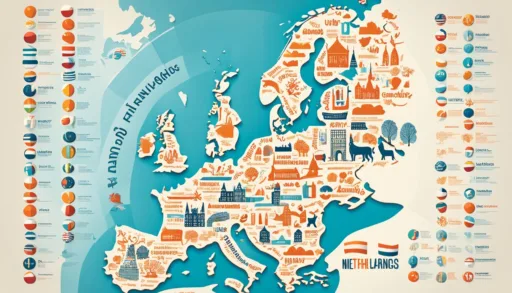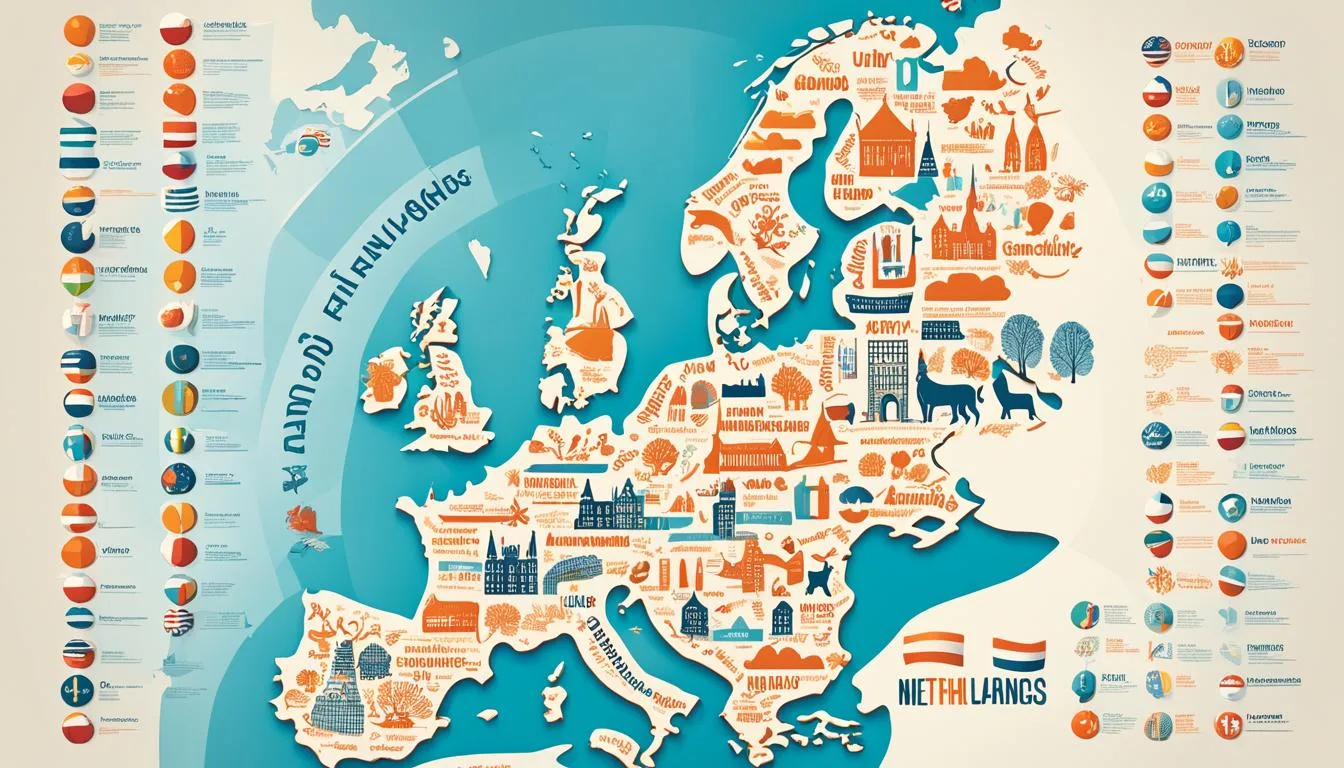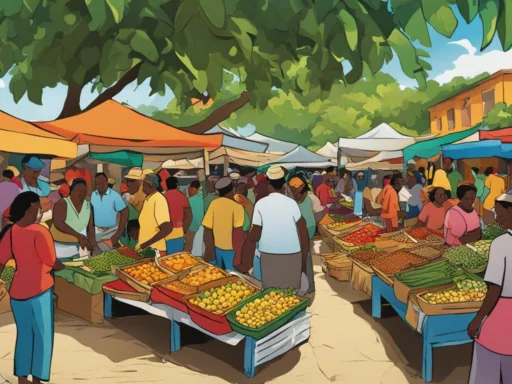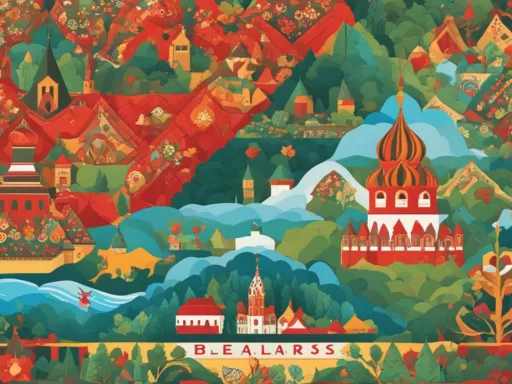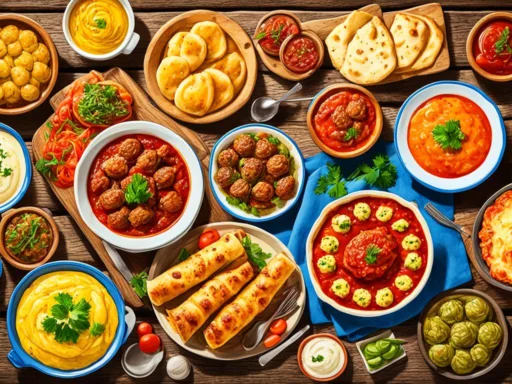Imagine a tiny nation where nearly every inhabitant can converse in at least two languages—the Netherlands is just such a place. With over 90% of the population fluent in English, the linguistic diversity of this small European country is unexpectedly vast. Beyond the ubiquity of the Dutch language, the languages spoken in the Netherlands paint a colorful linguistic landscape. This diversity not only highlights the cultural richness of the nation but also positions it as a uniquely multilingual society within Europe.
Key Takeaways
- Almost all residents of the Netherlands are proficient in the Dutch language, reflecting the country’s commitment to linguistic unity.
- English in the Netherlands enjoys a high level of proficiency, serving as a lingua franca for business, education, and tourism.
- The presence of German and French speakers showcases the cross-cultural exchanges and linguistic diversity within Dutch society.
- Regional languages such as West Frisian, Dutch Low Saxon, and Limburgish contribute to the rich tapestry of languages spoken in the Netherlands.
- Official recognition of Dutch Sign Language ensures inclusivity and accessibility for the deaf community.
- The Netherlands’ educational system emphasizes multilingualism, mirroring the country’s diverse communicative landscape.
Dutch as the Official Language of Netherlands
The venerable Dutch language serves as the core medium of communication within the Kingdom of the Netherlands. Recognized as the official language, it is a symbol of national pride and plays a central role in the country’s identity. Dutch boasts a historical lineage stretching back to the Early Middle Ages, while its present-day significance is epitomized by its use in governance, education, and day-to-day interactions among the Dutch people.
History and Standardization of Dutch
Emerging from the West Germanic family of languages, Dutch has undergone a riveting journey of evolution and standardization. Influenced by the Lower Franconian dialects, the language’s standardization process began in earnest in the 16th century, fostering coherence and literacy throughout the nation. This process secured the Dutch language’s position as integral to cultural unity and administrative coherence in the Netherlands.
Dutch in Education and Government
The adoption of the Dutch language in education is a pivotal part of its enduring legacy. As both the language of instruction and the subject of academic study, Dutch ensures that every student in the Netherlands is equipped with the tools necessary for effective communication and cultural understanding. Moreover, government proceedings, legislation, and official documentation are primarily conducted in Dutch, underscoring its authority as the official language.
The Global Presence of Dutch Language
Dutch extends its wings far beyond the European border, marking its global presence as an official language in territories such as Aruba, Bonaire, and Suriname. An estimated 23 million individuals speak Dutch natively, while another 5 million people around the world have embraced it as a second or foreign language. This global presence is reinforced by a variety of dialects, such as West Flemish, Hollandic, and Limburgish, adding to the richness of the language’s international stature.
Regional and Minority Languages
The cultural tapestry of the Netherlands is richly woven with a variety of regional languages and minority languages that add depth and color to the nation’s linguistic identity. Among these languages, Frisian, Low Saxon, and Limburgish stand out for their historical significance and the vitality they bring to their respective communities.
These local tongues, while not as widely spoken as Dutch, are cherished for their unique qualities and cultural importance. The Netherlands honors these languages under the European Charter for Regional or Minority Languages, providing a platform for their preservation and continued evolution. Here, we delve into the intricacies and regional specifics of these linguistic gems.
| Language | Region | Number of Speakers | Notable Dialects |
|---|---|---|---|
| Frisian | Friesland | 453,000 | West Frisian |
| Low Saxon | North-East Netherlands | 1,798,000 | Stellingwerfs, Drèents, Veluws |
| Limburgish | South-East Netherlands | 825,000 | Variants across the Dutch-German border |
These statistics not only quantify the presence of these languages but also hint at the deep-seated affinity many Dutch citizens have for their linguistic heritage. The provinces of Friesland, north-eastern regions, and the south-eastern locales each shelter a part of the country’s soul, manifested through their dialects and languages. Beyond the numbers, the stories and traditions carried through these tongues are an irreplaceable facet of the Netherlands’ diversity.
The wide-ranging dialects offer a fascinating glimpse into the past while showcasing the dynamic nature of language as it adapts and thrives in the modern era. From the melodic intonations of Frisian to the earthy tones of Low Saxon, and the melodic cadence of Limburgish, this linguistic mosaic is indispensable in understanding the true essence of Dutch cultural life.
The Widespread Proficiency in English
The Netherlands stands out in Europe for its exceptionally high proficiency in English. This not only serves the needs of the native population but also provides a seamless integration for the expat community and travelers. The Dutch embrace of bilingual education and English as a second language has positioned the country as a hub for international business and cultural exchange.
Use of English in Education
In the Dutch educational landscape, English takes a prominent role, specifically within the territories of BES islands such as Saba and St. Eustatius. The strategy of incorporating English as a foreign language into the curriculum from early childhood has yielded a population in the Netherlands where the majority boast nearly native-level proficiency.
Advantages for Visitors and Expat Community
Dutch fluency in English offers myriad benefits, particularly for the expat community and tourists. The high level of English proficiency, estimated at 90-93%, significantly aids those who choose the Netherlands as their new home or travel destination. It fosters an environment conducive to both business and leisure, providing a sense of comfort and belonging amidst a backdrop of Dutch tolerance and hospitality.
| Aspect | Benefit |
|---|---|
| Bilingual Education | Prepares a future workforce ready for global challenges and opportunities |
| Communication Ease | Reduces language barriers, facilitating social and professional integration |
| Cultural Exchange | Encourages a vibrant mix of ideas and traditions, enriching Dutch culture |
Understanding Frisian: The Second Official Language
The scenery of Friesland is not just characterized by its picturesque canals and lush meadows, but also by its distinctive linguistic soundscape. The Frisian language stands proudly as the second official language of the region, with its status officially recognized alongside Dutch in this northern province. As a fundamental element of local identity, Frisian resonates deeply with cultural significance and offers an intriguing linguistic experience in contrast to Dutch and English.

Frisian Language in Friesland
In the heart of Friesland, the Frisian language weaves a narrative of regional pride and cultural heritage. A testament to resilience and adaptation, this language has been embraced by nearly 500,000 speakers, collectively nurturing a dialogue between the past and the present. The regional government of Friesland champions the use of Frisian in both public and private spheres, ensuring that its melodious tones and unique syntax continue to flourish in a bilingual ecosystem.
Cultural Significance of Frisian
A beacon of local culture, Frisian captures the essence of Friesland’s historical narrative through its rich vocabulary and literary contributions. From spoken word to written texts, the language articulates regional stories, folklore, and the day-to-day life of the Frisian people. Its cultural significance is also manifest in education, where children are welcomed into the world of Frisian linguistics, instilling a sense of pride and continuity for future generations.
Comparison With Dutch and English
On the linguistic landscape, Frisian presents an interesting juxtaposition with its Germanic siblings, Dutch and English. The trio shares a common ancestry, yet Frisian encapsulates a distinct phonetic and grammatical structure, veering from the expected pathways of mutual intelligibility. For learners and linguists alike, the nuances of Frisian pronunciation and vocabulary offer a compelling study in contrast and comparison, revealing a linguistic tapestry that is diversely intertwined yet individually unique.
| Feature | Frisian | Dutch | English |
|---|---|---|---|
| Official Status | Co-official in Friesland | Primary official language of the Netherlands | Not official; widely spoken globally |
| Number of Speakers | Approx. 500,000 | Approx. 23 million | Over 1.5 billion (including non-native speakers) |
| Grammar and Syntax | Unique syntax aligning closer to Old English | Similar to other West Germanic languages | Simpler grammatical structure |
| Literary Works | Vast regional literature | Extensive national and international literature | Extremely broad literature spanning centuries |
| Language Acquisition | Focus on spoken language in initial learning stages | Structured education from early childhood | Emphasis on vocabulary and grammar for ESL learners |
With its enduring cultural significance and continuing support from both the local community and regional governance, the Frisian language remains a vibrant and essential facet of Friesland’s identity, inviting both residents and curious minds to delve into its linguistic intricacies.
German and French Language Influence
Delving into the linguistic landscape of the Netherlands language proficiency, we uncover the indelible German language influence and the notable French language influence. A widespread ability to converse in German is evident across the Netherlands, a testament to the shared cultural and economic ties that bind them. Meanwhile, the allure of the French language continues to resonate within educational spheres, enhancing the multilingual capabilities of the citizens.
| Language | Proficiency in the Netherlands | Context of Influence |
|---|---|---|
| German | 71% | Germany’s proximity and historical ties facilitate business and tourism exchanges, making proficiency in German crucial for many Dutch citizens. |
| French | 29% | Despite being less prevalent than German, the French language persists in the Dutch education system and holds sway in diplomatic and cultural domains. |
The imperative for linguistic agility in the Netherlands is underscored by the impressive swath of the population conversant in these foreign tongues. The capacity to interchange between Dutch, German, and French not only mirrors a pragmatic response to geopolitical realities but also enriches the personal and professional lives of Dutch speakers, elevating the nation’s prowess in the realm of international communications and cultural exchange.
Languages Spoken Netherlands: Italian, Spanish, and Other Immigrant Languages
The cultural fabric of the Netherlands is intricately woven with threads from all corners of the globe, including those from the vibrant Italian and Spanish communities. These groups, along with other immigrant populations, have introduced a plethora of languages to the nation, creating a rich tapestry of linguistic diversity. The result is a fascinating cultural crossroads and a testament to the country’s role as an international hub.

Italian and Spanish Communities in the Netherlands
The Italian community in the Netherlands and the Spanish community in the Netherlands are integral to the country’s mosaic of voices. These communities maintain their heritage languages and enrich the societal landscape through cultural festivals, authentic cuisine, and bilingual education, thereby sustaining the pulse of their native tongues amid the Dutch language context.
Contribution of Immigration to Linguistic Diversity
Immigrant languages, brought by communities from Latin America to Asia, contribute significantly to the ongoing dialogue about identity and heritage in the Netherlands. Linguistic diversity blooms in city streets and school corridors, with languages such as Portuguese, Mandarin, and Arabic adding to the mix. This multilingualism drives innovation and understanding, fostering an atmosphere of global citizenship.
| Community | Language | Influence |
|---|---|---|
| Italian | Italian | Cultural events, gastronomy, family ties |
| Spanish | Spanish | Business, media, education |
| Portuguese | Portuguese | Community networks, music, literature |
Understanding Dutch Dialects and Varieties
One of the key elements of the linguistic diversity Netherlands is known for lies in its Dutch dialects and language varieties. Each region of this compact country reveals a unique linguistic identity, where traditional dialects are a source of local pride and cultural heritage.
Countless people worldwide may speak Dutch, but what is less known is the intricate mosaic of dialects within the Netherlands itself. This linguistic richness provides a fascinating look into how language evolves and interweaves with geography and community.
Take, for example, the Limburgish dialect, spoken in the southern province of Limburg, which tones its sentences like a melody, differentiating it from mainstream Dutch. Dutch Low Saxon, spoken in areas stretching from Groningen to Overijssel, has strong historical roots and is recognized for its unique syntax and vocabulary.
| Dialect | Spoken in Region | Distinct Traits |
|---|---|---|
| Limburgish | Limburg | Tonal language, melodic |
| Dutch Low Saxon | Northeastern Netherlands | Historical vocabulary, unique syntax |
| Stadsfries | Frisian cities | Mixed elements of Dutch and Frisian |
| Bildts | Het Bildt | Strong Dutch influence, agricultural lexicon |
Interest in preserving and promoting these language varieties is more than academic or linguistic—it is about maintaining a connection with the past and a sense of identity that local dialects foster.
As we delve deeper into the Dutch dialects, it becomes clear that the linguistic diversity Netherlands offers is not merely about communication. It’s an emblem of cultural identity, storytelling, and the living history of the Dutch people.
Dutch Low Saxon and Limburgish Dialects
The linguistic tapestry of the Netherlands is rich and varied, with Dutch Low Saxon dialects and Limburgish dialects illustrating the country’s dedication to preserving its linguistic diversity. These dialects serve as more than mere communication tools; they are living records of cultural history and community identity. As part of the broader dialect continuum, Dutch Low Saxon and Limburgish extend beyond regional confines, sharing characteristics with neighboring dialects across the Dutch-German border.
Recognition and Protection under European Charter
In an effort to preserve the intricate weave of Europe’s cultural fabric, the European Charter for Regional or Minority Languages has extended its protection to include these valuable dialects. As part of this commitment, various initiatives have been set in motion to safeguard the linguistic heritage represented by Dutch Low Saxon and Limburgish, recognizing their importance not only within local communities but also as a part of our collective European identity.
Dialect Continuum Across Netherlands and Germany
The concept of a dialect continuum comes into full play when considering the fluid transitions between the Dutch Low Saxon dialects and Limburgish dialects as they span across national frontiers. This seamless linguistic flow allows for the study and appreciation of subtle shifts in phonology, syntax, and vocabulary—traits that paint a vivid picture of the shared history and interconnected fate of the European linguistic landscape.
| Dutch Low Saxon Dialect | Features | Region |
|---|---|---|
| Gronings | Strong tonal intonation | Groningen Province |
| Twents | Unique vowel pronunciation | Twente region |
| Veluws | Conservative syntax retention | Veluwe area |
| Limburgish Dialect | Features | Region |
| Maastrichtian | Nasal vowels | Maastricht |
| Venloos | Distinctive lexical inventory | Venlo |
| Weerts | Influence of Brabantian dialects | Weert |
The Role and Recognition of Dutch Sign Language
The profound impact of Dutch Sign Language (Nederlandse Gebarentaal, NGT) is multifaceted, profoundly affecting social inclusion, cultural identity, and the rights of the deaf community in the Netherlands. Serving as a vital communication tool, NGT has seen progressive strides in legal recognition, marking a significant advancement for language equality.
Importance for the Deaf Community
For the approximately 17,500 active NGT users, the language is more than a mere method of interaction—it is an essential aspect of daily life that empowers individuals and allows them to engage fully with society. The deaf community relies on NGT to connect not just with each other, but also with the broader Dutch society, fostering an environment where barriers to communication are actively dismantled.
Legal Status of Dutch Sign Language
After years of advocacy, the year 2021 marked a historic moment for NGT as it gained legal recognition as an official language of the Netherlands. This crucial development underscored the country’s commitment to linguistic diversity and the inclusion of all members within its society. The recognition of NGT as equal to Dutch undeniably affirms the significance of this visual language for the deaf community and validates the cultural heritage embedded within Nederlandse Gebarentaal.
Language Education and Foreign Language Acquisition
The Dutch vision for language education is one of diversified linguistic skill and cultural connection. Recognizing the advantages of multilingualism for personal and professional development, the Netherlands prioritizes foreign language acquisition from the initial stages of schooling. This commitment is evident in the proficiency levels seen across the nation, where a significant population is fluent not just in Dutch but in English, German, Spanish, and French as well.
Rosetta Stone’s TruAccent™ technology exemplifies the innovative tools embedded in the language education Netherlands model. By providing immediate pronunciation feedback, TruAccent™ assists language learners in mastering the nuances of spoken language, thereby enhancing their communicative competence. This aligns with the Netherlands’ educational ethos which encourages confident global engagement through language.

| Language | Role in Curriculum | Resource Example | Fluency Goal |
|---|---|---|---|
| English | Primary Secondary Language | English Interactive Software | Conversational Proficiency |
| German | Common Secondary Language | Cultural Exchange Programs | Basic Communication Skills |
| Spanish | Offered as Elective | Spanish Media Resources | Intermediate Proficiency |
| French | Offered as Elective | French Language Labs | Reading & Writing Focus |
“The ability to communicate in multiple languages is becoming increasingly important in the global community. Language is the road map of a culture.” – Dutch Education Council
- Early introduction to multiple languages
- Integration of technology in language learning
- Enhancement of global communicative competence
- Support for sustained educational excellence
Conclusion
The rich tapestry of the Netherlands linguistic landscape is unmistakable, characterized by a fusion of regional and international tongues. At the heart of this diversity is the Dutch language, complemented by regional dialects like Frisian, Low Saxon, and Limburgish that contribute to the nation’s cultural richness. The high proficiency in global languages such as English, German, and French further demonstrates the linguistic agility of the Dutch population. The commitment to language learning within the country’s robust educational framework lays a solid foundation for the continuing evolution of this linguistic diversity.
Summarizing Language Diversity in the Netherlands
In reflecting upon the language diversity found throughout the Netherlands, one observes a harmonious coexistence between the prevalence of Dutch and the cherished regional languages that shape local identities. This assortment of dialects and languages strengthens the fabric of national heritage, ensuring that each voice, whether speaking West Frisian in Friesland or Limburgish in the southeast, remains an integral thread in the broader cultural weave.
Future Outlook on Languages in the Netherlands
Looking to the future, the trajectory of languages in the Netherlands seems set to continue its dynamic course. As the global landscape shifts and demographics evolve, the interplay of established native tongues and new linguistic influences will likely add further dimensions to the nation’s already diverse verbal expression. It stands to reason that the future of Dutch languages will mirror this ongoing narrative of adaptation and growth, cementing the country’s position as a beacon of linguistic plurality and openness to the world’s tongues.
FAQ
What are the main languages spoken in the Netherlands?
The main languages spoken in the Netherlands include Dutch as the official language, English with high proficiency rates among the population, regional languages like Frisian, Low Saxon, and Limburgish, as well as immigrant languages such as Italian, Spanish, Turkish, and Polish.
Is Dutch the only official language of the Netherlands?
No, Dutch is the primary official language, but the Netherlands also recognizes West Frisian as a co-official language in the province of Friesland. Additionally, Dutch Sign Language (Nederlandse Gebarentaal, NGT) was recognized as an official language in 2021.
What is the history and standardization of Dutch?
The Dutch language has its origins in the Early Middle Ages and became standardized in the 16th century. It is a West Germanic, Low Franconian language that has developed over the centuries to become the modern Dutch language used today.
How prevalent is English in the Netherlands?
English is very prevalent in the Netherlands, with an estimated 90-93% of the Dutch population having proficiency in it. English is also used in the education system, particularly in the BES islands, and is widely spoken by both the local and expat communities.
What is the cultural significance of the Frisian language?
Frisian, the second official language of the Netherlands, holds significant cultural importance, especially in Friesland. It is integral to the region’s identity and is protected under the European Charter for Regional or Minority Languages. The language is related to both Dutch and English but has limited mutual intelligibility with Dutch.
Are languages besides Dutch and English widely spoken?
Yes, many people in the Netherlands can communicate in German and French, with 71% and 29% proficiency, respectively. Italian and Spanish are also spoken by immigrant communities, along with other languages like Turkish and Polish, contributing to the linguistic diversity of the country.
Can you tell me more about Dutch dialects?
The Netherlands is home to various Dutch dialects and varieties that highlight regional identity, including Limburgish, Dutch Low Saxon, and dialects such as Stadsfries, and Bildts. Each has unique phonetic and lexical traits, showcasing the country’s rich linguistic fabric.
What is the role of Dutch Sign Language in the Netherlands?
Dutch Sign Language (Nederlandse Gebarentaal, NGT) serves the deaf community and comprises approximately 17,500 users. It was granted official language status in 2021, recognizing its importance for communication and accessibility for those using sign language.
How does the Netherlands promote language education and foreign language acquisition?
The Dutch education system places a strong emphasis on multilingualism, introducing foreign language instruction at an early age. Resources and technology are used to support learning, with a focus on languages like English, German, Spanish, and French, promoting a society equipped to participate in the global community.
What is the future outlook on languages in the Netherlands?
The linguistic landscape of the Netherlands is expected to remain diverse and dynamic due to the country’s commitment to language education, the protection of regional and minority languages, and the evolving demographics influenced by global interactions.
